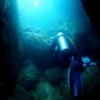-
Topics
-
Latest Update
-
0
WTS various corals at good prices.
Hi all, decided to do a rescape for my tank so will be progressively posting most of my corals for sale. Collection at Geylang S398412. If keen pls WA me at 96nineone03oneeight. Thx! -
2
WTS easy BIrdnest coral @ cheap price.
Hey guys, all frags sold thanks! -
0
XR 30 G5 blue to your XR30 G5 pro
Any one want to swap ? [emoji1362] Sent from my iPhone using Tapatalk -
1
-
0
WTS : Ecotech Radions XR15 (Blue) G5 - set of 3 with Ecotech rail and arms (for 4 ft tank)
Hi, Letting go of this set of lights that fit a 4 ft tank perfectly (mine was a Reefer 350). Wires are all snapped tucked in customized grooves on the rail making it very neat and tidy. Perfect condition. Asking for $1.5k or reasonable offer. Interested, kindly WA me at 93840868. Thanks!
-





Recommended Posts
Join the conversation
You can post now and register later. If you have an account, sign in now to post with your account.